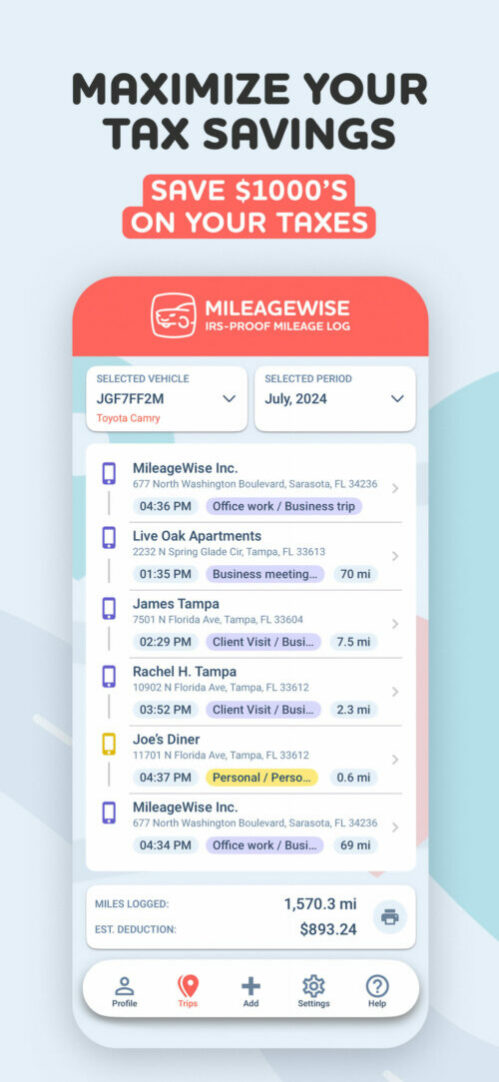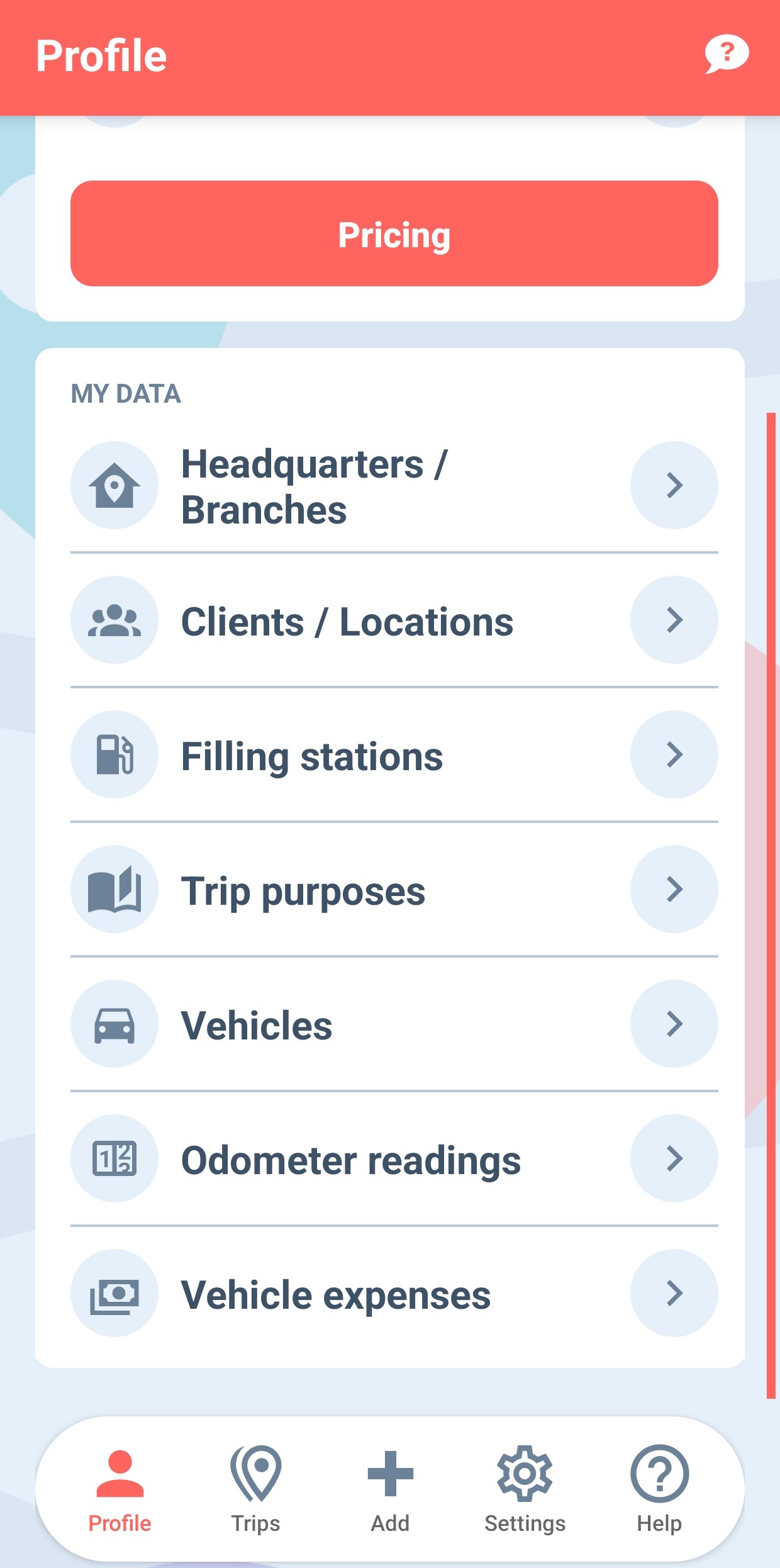A well-defined mileage reimbursement policy is essential for any business that relies on employees using their personal vehicles for work purposes. Whether employees are visiting clients, attending conferences, or running errands for the company, reimbursing them fairly for business mileage is both an ethical and financial priority.
A clear policy not only fosters employee satisfaction but also ensures tax compliance, reduces disputes, and streamlines administrative processes. In this guide, you’ll learn what company mileage reimbursement is, why creating a mileage reimbursement is crucial for your business, and how to craft one that works for everyone involved.
Try it for free for 14 days. No credit card required!
Dashboard
Table of Contents
Understanding Mileage Reimbursement
Before creating a mileage reimbursement policy, it’s important to understand the key elements of what it entails, how it’s calculated, and the potential tax implications. These foundational details will help you design a policy that is both fair and compliant with regulations.
What Is Mileage Reimbursement?
Mileage reimbursement is the process of compensating employees for driving their personal vehicles for work-related tasks. These trips can include visiting clients, attending off-site meetings, or running errands for the company. Unlike commuting, which is considered personal travel, business mileage is reimbursable because it directly benefits the employer.
How Is Reimbursement Calculated?
Most companies use the IRS standard mileage rate, which is updated annually to account for costs like fuel, maintenance, insurance, and depreciation. This rate simplifies calculations and ensures fairness. However, businesses can also adopt alternative methods, such as reimbursing actual expenses or setting custom rates that reflect local conditions or industry norms.
What Are the Tax Implications?
Tax compliance plays a significant role in mileage reimbursement. If handled correctly, reimbursements are not treated as taxable income for employees. On the other hand, poorly documented or non-compliant policies can lead to tax penalties for the business. Following IRS rules is crucial to avoid these issues while ensuring that reimbursements remain a non-taxable benefit.
Template for Mileage Reimbursement Policy
If you don’t have a Mileage Reimbursement Policy yet, download it by clicking on the button below:
Why Your Business Needs a Mileage Reimbursement Policy
Establishing a clear mileage reimbursement policy benefits your business in numerous ways. From ensuring compliance to maintaining strong employee relationships, a well-crafted policy helps you avoid common pitfalls while streamlining processes. Here’s why your company can’t afford to overlook this important tool.
Ensuring Fairness and Transparency
A clear mileage reimbursement policy ensures employees are fairly compensated for using their personal vehicles for work. This eliminates any uncertainty about what qualifies for reimbursement and fosters trust between employees and management. Transparency in the process reduces misunderstandings and disputes, creating a smoother working relationship.
Streamlining Tax Compliance
One of the primary benefits of a policy is ensuring compliance with IRS regulations. Accurate record-keeping and clear guidelines make tracking mileage for taxes straightforward, reducing the likelihood of errors or penalties during tax reporting. This not only protects the business from audits but also reassures employees that their claims are being handled correctly.
Managing Costs Effectively
For businesses, travel expenses can be a significant budget item. A policy helps track fixed and variable expenses, giving companies greater control over their spending. By clearly defining the scope of reimbursable travel and the methods for calculating payments, businesses can avoid overspending while still meeting their employees’ needs.
Protecting Against Disputes
Disagreements over mileage claims can strain employer-employee relationships. A formal policy removes ambiguity, as it clearly outlines which trips are eligible for reimbursement, how claims should be submitted, and what documentation is required. This clarity prevents conflicts and ensures a consistent process for all employees.
Improving Operational Efficiency
Beyond financial and compliance benefits, a mileage reimbursement policy simplifies administrative tasks. Employees know exactly how to submit their claims, and managers have a consistent framework for approving reimbursements. This reduces time spent on back-and-forth clarifications, allowing everyone to focus on their core responsibilities.
Want to Reduce Your Administrative Workload?
MileageWise: Tracks trips automatically via vehicle movement, Bluetooth, and Plug’N’Go without draining your battery.
AI-Powered Mileage Recovery: The AI Wizard helps reconstruct past mileage logs, filling gaps in your log to ensure compliance.
Built-in IRS Auditor: Checks and corrects up to 70 logical errors in logs, ensuring they meet IRS standards for tax deductions.
Web Dashboard & Team Collaboration: Manage logs, import trips, and collaborate with teams through the web dashboard, ideal for businesses.
Try it for free for 14 days. No credit card required!

Step-by-Step Guide to Creating a Mileage Reimbursement Policy
Ready to design your policy? Follow these steps to build a practical, compliant, and employee-friendly reimbursement structure:
1. Determine Policy Scope
- Clarify who is eligible for employee mileage reimbursement.
- Define reimbursable trips, such as client visits or delivery runs, and exclude personal errands.
2. Choose a Reimbursement Method
Each method has pros and cons, so choose what fits your business model:
Standard Mileage Rate
This method uses a fixed per-mile rate set annually by the IRS to cover vehicle-related expenses like fuel, maintenance, and depreciation. Employers multiply the total miles driven for business purposes by this rate. This method is simple and IRS-approved, but may not reflect the companies specific needs.
Custom Mileage Rate
Employers set their own reimbursement rate instead of following the IRS standard. This method allows businesses to tailor rates to local costs or specific circumstances. However, any amount reimbursed above the IRS rate is taxable as income for employees. This method is flexible to match regional or business-specific needs. However, setting it requires careful consideration
Flat Monthly Stipend
Employees receive a fixed monthly payment for travel expenses, regardless of the actual number of miles driven. This method works best for roles with predictable travel patterns. It may be simple but not always fair.
FAVR (Fixed and Variable Rate)
This approach combines a fixed payment for ownership costs, like insurance, with a variable payment based on miles driven. It balances fixed and variable costs but is complex to manage.
Per Diem Allowance
Employees are provided a set daily amount for travel expenses, including mileage, usually for short-term or temporary assignments. This is an easy way to reimburse ad hoc trips but not suitable for employees who use their vehicles for work regularly.
Each method has its advantages and drawbacks. Choose the one that aligns with your company’s goals, employee needs, and administrative capacity.
3. Set the Amount of Reimbursement
Use the IRS standard mileage rate as a baseline or set a customized rate that reflects local costs and your company’s financial capacity.
4. Establish Record-Keeping Requirements
Employees should provide detailed records, including:
- Company mileage logs with dates, locations, trip purposes, and distances (if you choose to reimburse by mile)
- Receipts for tolls, parking, and other reimbursable expenses.
- Other supporting documents based on the reimbursement method chosen.
5. Review Tax Compliance Requirements
Reimbursement should align with IRS rules to remain non-taxable for employees. Non-compliance could result in the amounts being treated as taxable income.
6. Communicate and Implement
Train employees and managers on the policy, ensuring everyone understands the process. Provide examples or templates for logging trips, submitting claims, and understanding reimbursement limits.
Using Technology for Mileage Reimbursement
Manually maintaining a company mileage log can be tedious and prone to errors. That’s where technology steps in:
- Mileage Tracking Apps: Tools like MileageWise simplify tracking mileage for taxes, ensuring accuracy and IRS compliance.
- Automated Reports: Apps generate ready-to-submit mileage reports, saving time for employees and administrators alike.
- Team solutions: Advanced trackers can host multiple users in one account to ensure seamless integration with your workflow.
Conclusion
A clear mileage reimbursement policy isn’t just a nice-to-have—it’s a necessity for any business that values transparency, compliance, and employee satisfaction. By following the steps outlined above and leveraging templates and technology, you can create a policy that benefits both your business and its employees.
Investing time in creating a strong policy now will save you countless headaches in the future. So start drafting, and let tools like MileageWise make implementation a breeze!
Try it for free for 14 days. No credit card required!
Dashboard
FAQ
What are the IRS rules for mileage allowance?
The IRS sets a standard mileage rate annually to determine tax-free reimbursement for business miles driven in a personal vehicle. Employers must keep accurate records of mileage to comply with these rules.
What happens if an employer doesn’t reimburse mileage?
If mileage isn’t reimbursed, employees can potentially deduct unreimbursed business expenses on their personal tax returns, depending on the tax laws in effect. However, this deduction is limited and may not apply to all taxpayers.
What mileage can be reimbursed?
Only work-related mileage, charity miles, medical miles, and moving miles for active military personnel are reimbursable. Personal travel, including commutes to and from work, does not qualify.
What is business mileage reimbursement supposed to cover?
Mileage reimbursement typically covers costs related to operating a vehicle for work purposes, including fuel, maintenance, depreciation, and insurance.
Where is mileage deducted on a tax return?
For those eligible to claim unreimbursed mileage expenses, deductions can be included under Schedule A (Itemized Deductions). However, the Tax Cuts and Jobs Act limits this deduction for most employees.










